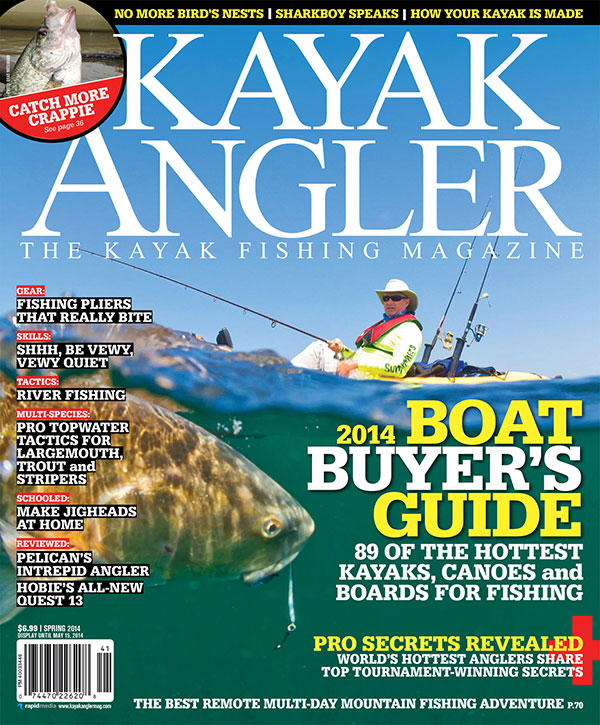Topwater lures are an exciting and productive way to catch fish, but learning to use a surface-walker can be frustrating and intimidating. For tips and tricks on choosing and using topwater lures, we asked three pros for some dance lessons.
Water Walkers: Learn How to Tango from Topwater Pros
1 Wide-mouth Receivers
Kayak Bassin’ TV star, Chad Hoover uses topwater frogs to nail big largemouth. “The lure is like a wide receiver,” says Hoover, “but the quarterback can’t make the pass if the receiver keeps stopping on the field.” He suggests working the lure steadily so the fish will be able to anticipate its path.
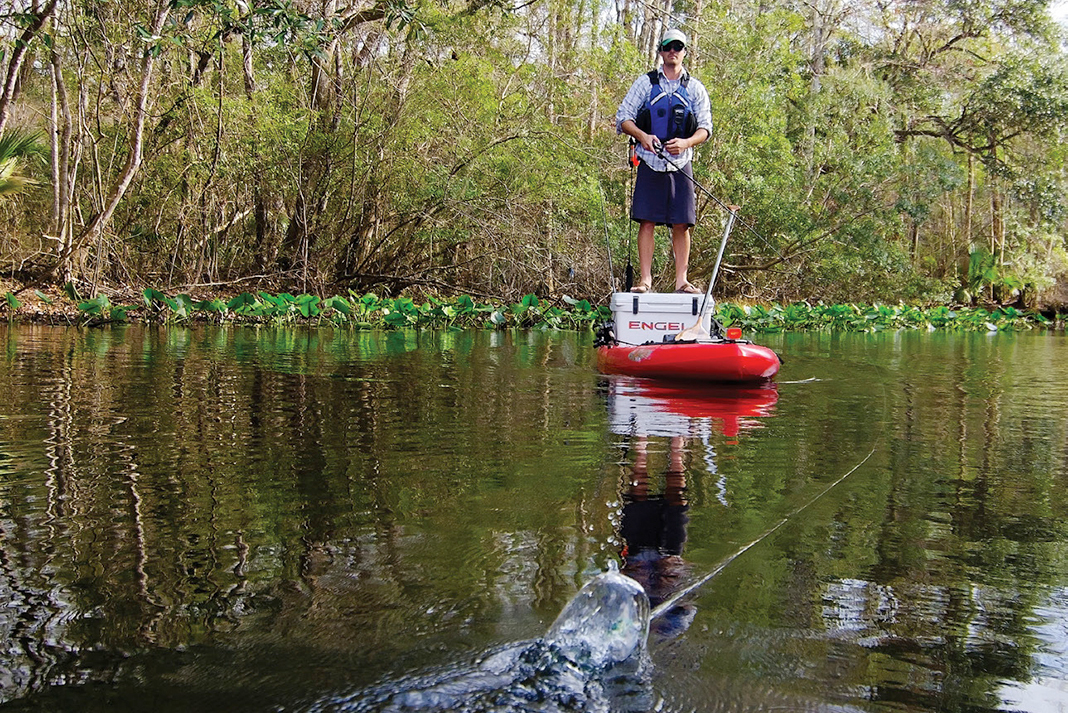
Hoover likes a seven-foot, medium-heavy rod and conventional reel with a 7:1 retrieve ratio that allows him to quickly rip the lure across the water or slowly work it inch-by-inch. The reel is spooled with 30- to 50-pound braided line attached with an Albright knot to a six-foot piece of 20-pound monofilament leader. “Braided line is more sensitive to feel the slightest bite and has less stretch for a solid hookset,” he explains.
To finesse a strike, Hoover will let the lure rest on the surface and use his finger to tickle the line. “This gives the lure extra vibration,” he says, “without moving it across the water.”
2 Trout On Top
Hobie Fishing tournament pro Marty Mood has fished for speckled trout from the Gulf Coast to the mid-Atlantic. “My favorite time to fish topwater is on windy days,” says Mood, “when bait is concentrated and fish are on the feed.” Mood likes to work a Super Spook, One Knocker or Chug’n Spook lure across shallow grass beds and over sandy potholes. “Big, loud lures imitate wounded baitfish or snapping shrimp,” says Mood.
The chaos and violence of a topwater strike makes setting the hook one of the toughest skills to master. Mood stresses, “before setting the hook, wait until you feel the weight of the fish on the line.” He recommends a softer hook-set as opposed to hauling back hard on the rod. “A long, seven-and-a-half-foot rod can help take up slack line on the strike,” he says, “and a slower, softer tip keeps the angler from pulling the lure out of the fish’s mouth.”
3 Easy Targets
Adam Taylor, president of the Casco Bay Anglers Club, stalks the shallow flats of Maine for striped bass. He targets access and ambush points like a river mouth or drop off at dawn and dusk. To cast large surface flies, Taylor uses a nine-foot, nine-weight fly rod and a nine-foot leader tied to weight-forward tarpon line.
Taylor chooses topwater patterns that match a wounded baitfish. “I like poppers, gurglers and Skitter Pops,” says Taylor, “any imitation that pushes a big splash of water.”
When sight casting to striped bass, presentation is everything. “Don’t land the lure on the fish’s head,” he says, “cast five or 10 feet ahead, let the lure sit for a second and then start the retrieve.”
“If you get a short strike, stop retrieving the lure,” says Taylor, “striper like to stun their prey and then return to finish it off.” He suggests re-starting the retrieve slowly, then picking up speed as the lure moves towards the boat. “This mimics a dazed baitfish realizing it barely escaped,” he says.
Topwater Tackle Box
These surface lures pop, chug and buzz.
 Heddon Chug’n Spook
Heddon Chug’n Spook
$8.99 | heddonlures.com
Adds a hefty splash to the classic “walk-the-dog” surface sashay.
Buy from:
AMAZON BASS PRO SHOP CABELA’S BUY FROM WALMART
 Rapala Skitter Pop
Rapala Skitter Pop
$13.99 | rapala.com
The loudest spitting sound of any topwater.
Buy from:
AMAZON BASS PRO SHOP CABELA’S CANADIAN TIRE BUY FROM WALMART
 Rainy’s Soft Foam Inshore Popper
Rainy’s Soft Foam Inshore Popper
$7.99 | rainysflies.com
Light enough for surface action and heavy enough to cast into the wind.
Topwater lures work best with rod tip held low so the lure makes the most commotion. | Feature photo: Chris Funk




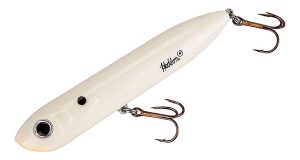 Heddon Chug’n Spook
Heddon Chug’n Spook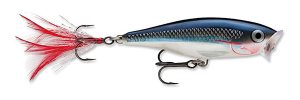 Rapala Skitter Pop
Rapala Skitter Pop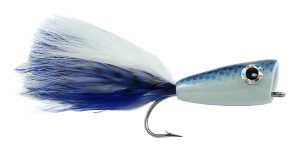 Rainy’s Soft Foam Inshore Popper
Rainy’s Soft Foam Inshore Popper